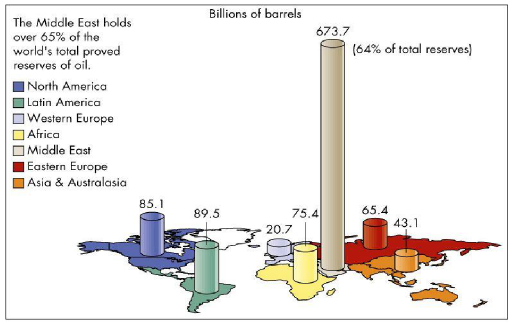Table 4: Tertiary coalfields
Petroleum is also called ‘black gold’ or ‘liquid gold’. It is second to coal in terms of sources of energy. It is an essential source of energy for all internal combustion engines in automobiles, railways and aircraft. Crude petroleum occurs in sedimentary rocks of the tertiary period. It is formed when large quantities of dead organisms, usually zooplankton and algae, are buried underneath sedimentary rock and subjected to intense heat and pressure.
Petroleum (and natural gas) are born and accumulate in the sedimentary mantle of the Earth. Small amounts of these hydrocarbons are present throughout the mantle, but large
accumulations are encountered less frequently. About 600 sedimentary basins, characterized by oil and gas occurrence, are found on the Earth.
Unlike coal, Petroleum is not distributed evenly around the world. More than half of the world’s proven oil reserves are located in the Middle East (figure 5). Following the Middle East are Canada and the United States, Latin America, Africa, and the region occupied by the former Soviet Union. Each of those regions contains less than 15 percent of the world’s proven reserves [2].

